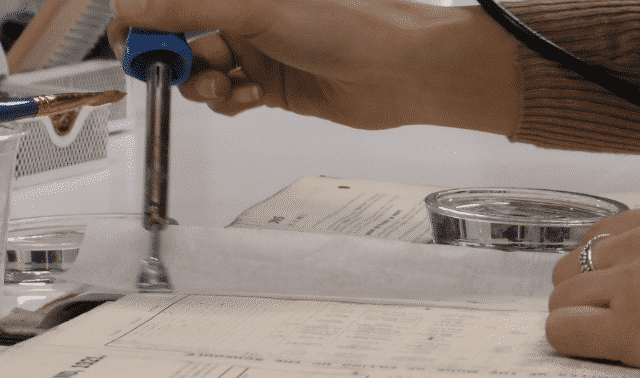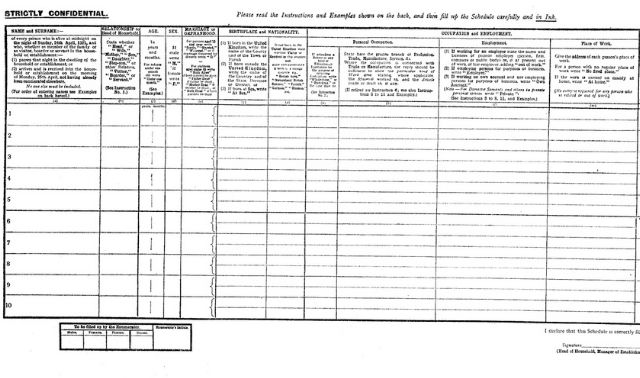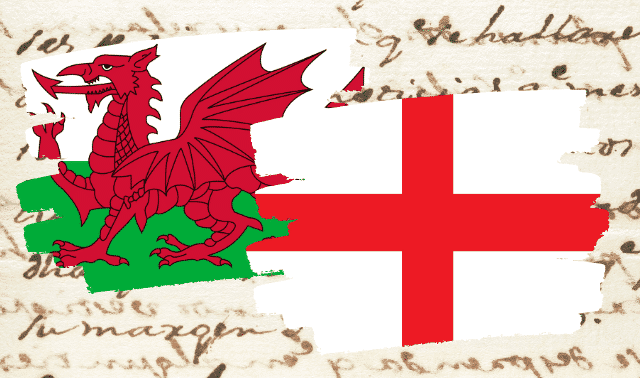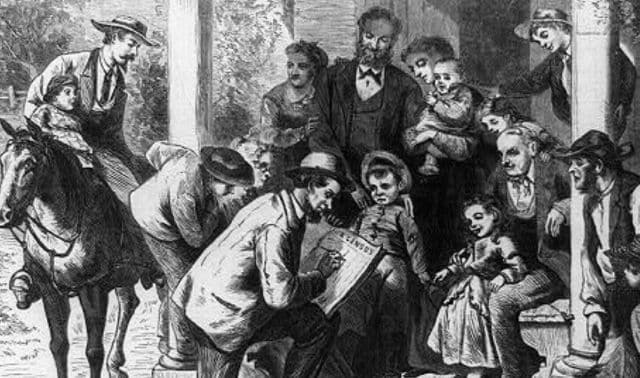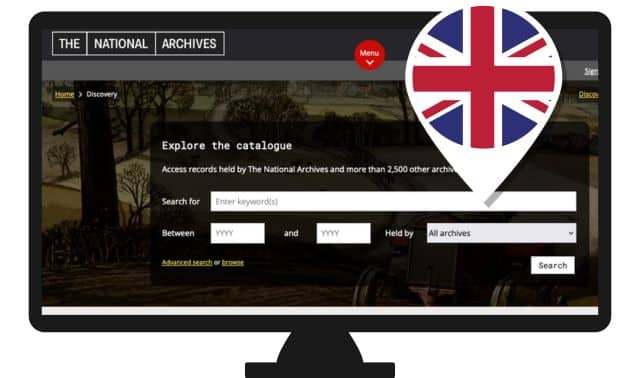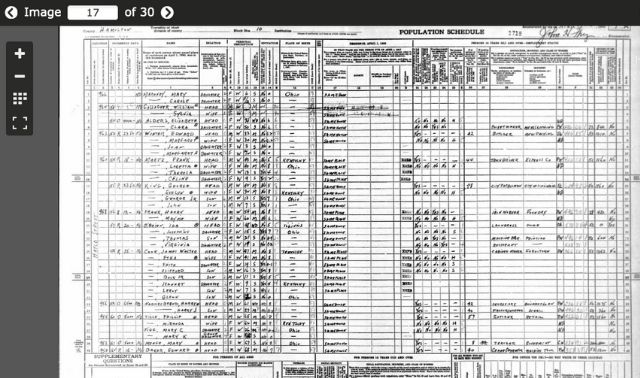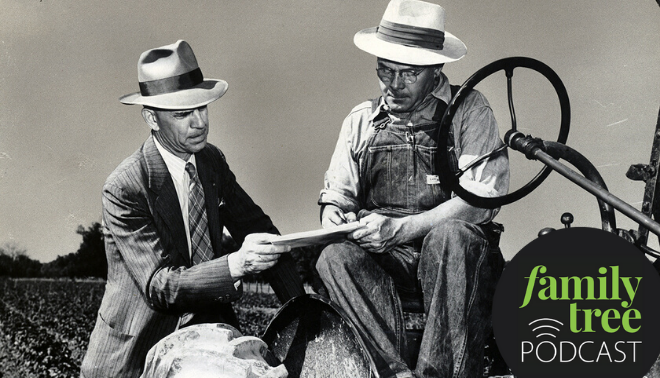Sign up for the Family Tree Newsletter Plus, you’ll receive our 10 Essential Genealogy Research Forms PDF as a special thank you!
Get Your Free Genealogy Forms
"*" indicates required fields
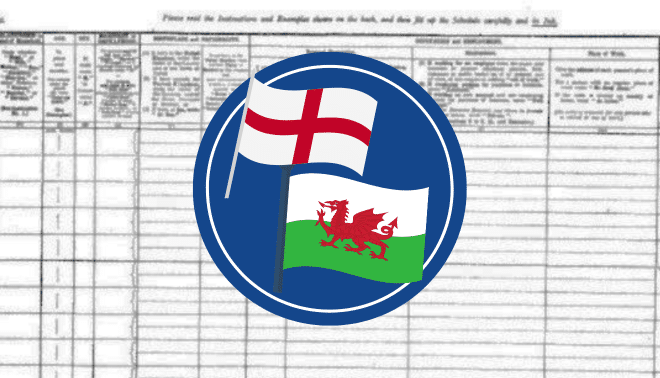
The highly anticipated 1921 census of England and Wales was released on 6 January 2022. With names, ages, places of birth and relationships covering virtually the whole population in that year, these records are a major resource for genealogists.
The 1921 enumeration is made all the more important because of what transpired in the decades that followed: The 1931 census was lost in a fire, and the 1941 census wasn’t taken because of World War II. As a result, the 1921 census is the last decennial census available until 2052, when (if current privacy laws are maintained) the 1951 census will be released.
The UK National Archives’ commercial partner, Findmypast, digitized, transcribed and indexed the entire 1921 census of England and Wales before placing it online. The original census records consist of more than 28,000 bound volumes filling shelves a mile long. The collection on Findmypast contains an estimated 18 million color images with details on almost 38 million people.
ADVERTISEMENT
Here’s what to expect from the 1921 census of England and Wales, and how you can use it to find more about your ancestors.
When Was the UK Census Taken?
Like the United States, the United Kingdom holds a nationwide census every 10 years, on the “ones” (1841, 1851, 1861 and so on). The first census was taken in 1801, though only heads of household were named. Many of these early records don’t survive.
The 1841 census, the first to ask for individual names, is considered the first one to have significant genealogical value. Beginning in 1851, the census listed each person’s parish of birth—especially helpful in locating the origins of people born before civil registration of births, marriages and deaths began in 1837. The 1841–1911 censuses have been released to the public.
ADVERTISEMENT
The most recent UK census was taken in 2021, but privacy laws restrict access for 100 years. As a result, the 1911 census was previously the most recent enumeration available to the public. And the aforementioned disasters (fire destroying the 1931 census, and World War II preventing the 1941 census from taking place at all) mean 1921 is the “last stop” for English and Welsh census records for decades.
In addition to England and Wales, the 1921 census covers the Isle of Man and the Channel Islands, plus merchant ships in the waters of England and Wales, ships of the Royal Navy, and British Army, and (new in 1921) Royal Air Force units who were stationed overseas.
The 1921 census was supposed to be taken on 24 April 1921, but was delayed by a Black Friday strike by railwaymen, coal miners and transport workers. The census was instead taken on 19 June 1921.
What of Scotland and Ireland? As part of the United Kingdom, Scotland also took a census in 1921. Records are held separately and being digitized later in 2022 by ScotlandsPeople. Ireland, though nominally still part of the United Kingdom in 1921, did not take a census that year, as it was in the midst of its partition and (for the Republic of Ireland) independence.
Questions in the 1921 UK Census
The 1921 census asked for more information than any previous UK census. Even standard questions such as age and birthplace requested more detail. Each respondent’s age is recorded not just in years, but also in months. And the place of birth shows the town or parish and county for those born in Great Britain and the country plus the state, province or district for people born abroad. There was a separate option for respondents “born at sea.”
In addition to the basics (name, address, age, sex, birthplace and relationship to the head of household), the 1921 census also asked:
- marital status (including, for the first time, divorced) of respondents over age 15
- whether parents were living (for respondents under age 15)
- nationality (if born abroad)
- industry, name of employer, and place of employment (including address)
- whether attending school or other educational establishment (and if attending part-time or full-time)
- number and ages of living children and step-children (for married men, widowers and widows)
Several questions were new or expanded from previous censuses, such as employment and educational information, plus whether a married person had been divorced. Don’t forget to look at the bottom of the form, which asked the enumerator to specify the number of rooms (i.e., living spaces) in each household.
In addition, the census schedules for Wales, Monmouthshire and the Isle of Man asked if the person spoke Welsh/Manx, English or both. Likewise, the armed forces schedule asked if the person can speak Welsh or “Gaelic,” in addition to English.
Other questions were cut from previous enumerations, a first for the UK census. The preceding census, in 1911, asked for the number of years of marriage and the number of children. Parents objected to providing this information on their children, and their answers in that census were considered unreliable. As a result, those questions were dropped in the 1921 census, as were questions related to if someone was blind, deaf or dumb.
You can see a full list of questions here.
How the 1921 UK Census is Digitized
With so many details—and more than 37 million individuals surveyed—the census is no small collection. According to Findmypast, the census is made up of two collections:
- 8.5 million questionnaires (or RG 15 schedules) completed by the head of household or another family member in his or her own handwriting, organized into some 28,000 volumes
- nearly 2,000 volumes of Plans of Division, booklets in which registrars described how an area was divided into enumeration districts
The districts in the latter were created such that a single enumerator could visit and collection information from all the district’s properties in a single day. Plans of Division for urban areas include the range of house numbers covered on each street, while those for rural areas note hamlets and outlying farms in their charge. You can use Plans of Division to identify which enumeration districts you should browse.
The materials are delicate and often hard to read, requiring careful handling. “More than 30 staff members are required in the conservation and scanning studio, handling fragile physical documents that have remained securely stored for 100 years,” Findmypast explains.
There’s no “rush job” when it comes to a project of this magnitude. In addition to the sheer amount of documents, each of those 28,000 volumes must be handled by a trained conservation technician. This person is responsible for a variety of specialized tasks, including:
- removing any pins or other objects that can damage the paper
- correcting folds that are covering the text
- separating any pages that are stuck together
- restoring torn pages
Every page is examined, cleaned and repaired, then passed to Findmypast’s scanning team. Each page (along with any attachment) is then scanned, along with the front and back covers of each volume. Finally, each image is quality-checked before being stored on a secure server. Findmypast estimates the final product includes some 20 million images.
Most online census records are digitized from black-and-white microfilm, producing images that are often unclear and hard to read. In contrast, Findmypast created full-color scans from the original 1921 census records, resulting in high-quality images.
Where is the 1921 UK Census?
Unlike other UK censuses, the 1921 census has been exclusively released on Findmypast. At this time, there’s no indication that 1921 census records will be available on other sites like Ancestry.com or FamilySearch.
Are 1921 UK Census Records Free?
No. As with other records in Findmypast collections, you can search the 1921 census indexes for free. But you’ll need to pay a fee to view any actual record images (£3.50/image) or transcriptions (£2.50/transcript). (Findmypast is a subscription website, and requires its users to have paid subscriptions to view most—but not all—of its record images.) In late 2022, Findmypast launched a new Premium subscription plan that includes access to the record set. Subscribers who were on the existing subscription plan (called Pro) also have to pay to access full records, though they can receive a discount on upgrading to the Premium subscription.
Looking for free access to the 1921 UK census? In-person visitors to the UK National Archives in London and select “regional hub” libraries across England and Wales view online images for free.
According to the site, the fee structure “will cover the cost of digitizing and transcribing the 18,235,242 images created from the records supplied exclusively to us by The National Archives. It means these precious records are accessible, commitment-free, for everyone.”
How Can I Search the 1921 Census?
You can search for your ancestor by name. Here are some tips for searching these (and other) UK census records:
- Try different combinations of search terms, such as a first name and a last name; a first name, an age and a place of residence; and the names of two members of the same household.
- Experiment with the “Name Variant” option. My relative William Fleming Morgan is always listed in the census as “William F. Morgan,” not William Morgan or William Fleming Morgan.
- Search on abbreviations for given names, such as Chas for Charles, Jas for James, Jno for John, Robt for Robert, Thos for Thomas and Wm for William.
- Search for everyone with the same surname living in the vicinity of your ancestors to find potential relatives.
- If your searches don’t work, browse the census pages.
But if name searches are proving fruitless, look for ways to browse record images. For the 1911 census, Findmypast gives you “Browse” options for filtering search results by parish, registration district, and county. Select one of these places and leave your search terms blank, and you’ll see only entries from that place, somewhat mimicking the browse features of other genealogy websites.
At present, FamilySearch has free indexes to 1841–1911 census returns, as does the volunteer-run FreeCen. FamilySearch’s collections link to images on commercial sites, such as Ancestry.com, Findmypast, Genes Reunited, MyHeritage and The Genealogist. It’s not clear as of writing if or when FamilySearch will do the same for the 1921 census as well.
My immigrant ancestors left England and Wales long before 1921. But I still plan to check the 1921 census for relatives. I expect to find some of them on the same farms in Wales where my ancestors lived before emigrating; a keyword search of the 1911 census on Findmypast for a farm name turns up the farm’s residents. If that same search doesn’t work for the 1921 census, I’ll use the Plans of Division to identify the enumeration district I should browse for those farms.
The 1921 census of England and Wales is ultimately just one record set, albeit an important one. Use it in conjunction with other records (including vital records, newspapers and wills) to trace your ancestors.
Last updated, September 2022. A version of this article appeared in the January/February 2022 issue of Family Tree Magazine.
ADVERTISEMENT

